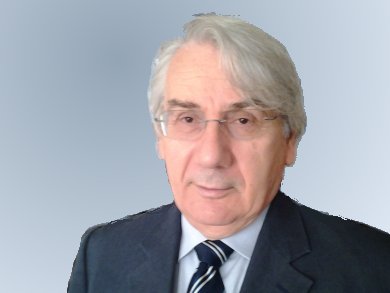Professor Antonio Laganà of the University of Perugia, Italy, coordinated the Multimedia in Teaching and Learning Chemistry working group of the European Chemistry Thematic Network (ECTN) of which he was President from 1988 to 2000. He has been involved in the development and implementation of the EChemTest of the ECTN.
Here he talks to Dr. Vera Koester for ChemViews Magazine about how e-testing is used today, why e-tests are so popular, and what their challenges are.
How is e-testing used today?
E-testing is increasingly used in various disciplines including chemistry. To this end, different types of software ranging from commercial, to proprietary, to open source are being used by different institutions and educators. The main purposes of using e-testing are to evaluate one’s chemical knowledge and to rank students or applicants for a job on the grounds of their chemical competence.
Who is using it and why?
The main users of e-testing are educational institutions at various levels for assessment purposes and private companies for job training and selection purposes. In educational institutions the focus is more on spotting knowledge deficits and filling related gaps or even following alternative teaching routes than for ranking the students. Tests are tools that are well suited to the adoption of a given metric in teaching roadmaps and in drastically reducing subjective biases of both teachers and students. E-tests have the advantage of being less error prone and faster to analyze than paper tests.
What other advantages do they have?
The main practical advantage of e-testing is its higher efficiency in random selection, sorting, and publishing of questions and answers. Other higher-level advantages are the possibility of interaction with the medium for using support tools like calculators, graphics, animations, composition and decomposition of formulae, and so forth; the possibility of better tailoring the set of questions for specific purposes like job selection, professional questionnaires, and so forth; and the utilization of databases for importing questions and/or statistically managing answers.
What are the main challenges?
The main challenges are the possibility of having different test sessions of equal statistical validity for large-group comparisons and the possibility of continuously improving and checking the content of the libraries. Moreover, e-testing encourages the development of supporting materials. A key challenge for ECTN is the development of teaching materials that support student preparation (learning objects) and their implementation on shared destributed repositories, so that they can be continuously improved.
Can you please explain what the EChemTest is and what makes it unique compared with other tests?
EChemTest sessions are one-hour-long sessions in which the student answers a set of randomly selected questions of a given average difficulty. It has a unique role in setting a European standard in chemistry in higher education and in representing a data aggregation center for developing common European educational interactive materials.
EChemTest libraries have been designed and implemented as an outcome of the work carried out by hundreds of educators from all the European countries in a joint endeavor started about 15 years ago. Such work was aimed at assembling a common syllabus, setting a common framework of educational levels (first, second, and third cycles), and identifying knowledge trees of subject-specific libraries and sub-libraries. Such work is still ongoing in terms of extending, revising, and maintaining the libraries.
What is the role of the European Chemistry Thematic Network (ECTN)?
The role of the ECTN has been that of organizing—within the framework of several projects carried out as EC Lifelong Learning Programs—the design, development, and implementation of the EChemTest. To this end, ECTN relies on the initiatives of its Virtual Education Community (VEC) standing committee, which stimulates and coordinates the active institutions of the network with regard to updating the syllabus, enriching the libraries and sub-libraries, designing new tools, managing the test centers, providing centralized services, and developing support materials. All these activities mainly deal with the basic English version while translations to national languages are taken care of by the national test centers.
What are your hopes for the future?
In my view, the first objective of the EChemTest has already been achieved due to the fact that it represents a de facto standard in quantifying the amount of molecular science knowledge to be possessed by candidates who wish to document their level of competence in chemistry. In European models, standards are necessary to enhance the exchange of knowledge and cooperation.
However, in addition to greater outreach and dissemination of e-testing, our aim for the future is to activate a virtuous circle of continuous improvement of EChemTest-related e-learning material. In particular, our efforts are moving in the direction of establishing distributed repositories of cooperatively managed learning objects.
What made you interested in e-testing?
The interest in using computers to deal with chemical knowledge and its acquisition was a natural development of my involvement in computational chemistry and of my wish to understand chemical processes and structures at the microscopic level. My dream, since my undergraduate studies, has been to support the study of molecular processes with exact computational methods and to develop ad hoc and accurate molecular simulators. The path from this to their use to establish the questions, answers, and complementary materials of the EChemTest was short thanks to the fast progress of computer networks. Moreover, I have long been convinced that e-testing should be used as a tool to enhance, and not just assess, the understanding of molecular science and technology.
Please tell us a bit about how your career has developed and what your research is focusing on.
My scientific career has developed in theoretical and computational chemistry since the very beginning of 1960s, starting on an Italian desktop computer of that time and on some IBM and UNIVAC machines. That this is my natural preference was consolidated thanks to a postdoc in Manchester, UK, and several summers spent at the Los Alamos National Lab, Caltech, USA, and in Cambridge, UK. Since then, my interest in computers and computational applications has grown every year due to work on mainframes, on vector and parallel computers, and finally on distributed networked platforms to make the analysis of chemical processes faster, more accurate, and able to deal with more complex systems.
Being Director of the Computer Center of the University of Perugia for six years and Director of the Chemistry Department for 12 years has enhanced my involvement in virtual communities, fostered by the development of networked computing and its use for educational purposes. This has been supported by my active participation in the European Grid Infrastructure (EGI) and the management of the COMPCHEM virtual organization. This has also led naturally to my in-depth engagement in the e-testing work packages of the ECTN educational projects.
What other interests do you have?
I must admit that I am deeply absorbed in my research work in developing software tools that make our knowledge of molecular processes increasingly more accurate by exploiting the computing power that is obtainable by creating large networks on a grid of computers ranging from portable to supercomputers (high-throughput and high-performance computer platforms).
This is quite naturally complemented by my current engagement in managing the computational chemistry division of EuCheMS, the CMMST virtual research community of EGI, the virtual education community of ECTN, and MASTER-UP, which is an academic spinoff. In the recent past, my roles have included the presidency of ECTN, the chairmanship of the chemistry domain committee of COST, and directing the computer center and the Chemistry Department of my University.
My other key interest is reading books, especially essays in various disciplines. When I am at home I like to take care of my small back garden and take early morning walks with my Golden Retriever.
Thank you for the interview.
 Antonio Laganà, born in Como, Italy, in 1944, graduated with a degree in Chemistry in 1969 from the University of Perugia, Italy, where, after serving in the army from 1970 to 1971, he started carrying out research with Professor V. Aquilanti from 1972 to 1976 through fellowships and research contracts. After serving for two years as a research assistant in Manchester, UK, with Professor J. N. L. Connor, he became a lecturer in chemical kinetics in 1979, Associate Professor in Physical Chemistry in 1985, and finally Full Professor in General and Inorganic Chemistry in 1994 at the University of Perugia.
Antonio Laganà, born in Como, Italy, in 1944, graduated with a degree in Chemistry in 1969 from the University of Perugia, Italy, where, after serving in the army from 1970 to 1971, he started carrying out research with Professor V. Aquilanti from 1972 to 1976 through fellowships and research contracts. After serving for two years as a research assistant in Manchester, UK, with Professor J. N. L. Connor, he became a lecturer in chemical kinetics in 1979, Associate Professor in Physical Chemistry in 1985, and finally Full Professor in General and Inorganic Chemistry in 1994 at the University of Perugia.
Laganà spent long periods of research as a visiting scientist at the Los Alamos National Laboratory, USA, from 1987 to 1994; at the CNUCE of Pisa, Italy, from 1988 to 1995; at CECAM, Orsay and Lyon; ECSEC, Rome, Italy; CESCA, Barcelona, Spain; and EPCC, Edinburgh, UK, among others.
His scientific interests are the development of theoretical and computational approaches with an emphasis on the study of dynamics and kinetics of both simple and complex systems; the rationalization of experimental outcomes with particular concern for molecular-beam data; and the implementation of tools for collaborative computing, virtual environments, and virtual communities operating on high-performance and high-throughput distributed platforms for applications and simulations of the molecular sciences.
Laganà has authored and co-authored about 400 papers in scientific journals and nine books, and has prepared teaching material for several national and international schools as well as delivered numerous scientific presentations at various institutions and national and international conferences.
Selected Publications
- COMPCHEM: Progress Towards GEMS a Grid Empowered Molecular Simulator and Beyond,
A. Laganà, A. Costantini, O. Gervasi, C. Manuali, N. Faginas Lago, S. Rampino,
J. Grid Computing 2010, 8, 571–586.
DOI: 10.1007/s10723-010-9164-x - GRIF: A New Collaborative Framework for a Web Service Approach to Grid Empowered Calculations,
C. Manuali, A. Laganà,
Future Generation Computer Systems 2011, 27, 315-318.
DOI 10.1016/j.future.2010.08.006
- Learning Objects Efficient Handling in a Federation of Science Distributed Repositories,
S. Tasso, S. Pallottelli, M. Rui, A. Laganà,
Computational Science and Its Applications – ICCSA 2014 (Lecture Notes in Computer Science) 2014, 8579, 615-626.
DOI: 10.1007/978-3-319-09144-0_42 - Code interoperability and standard Data Format in Quantum Chemistry and Dynamics: the Q5/D5cost Data Model,
E. Rossi, S. Evangelisti, A. Laganà, A. Monari, S. Rampino, M. Verdicchio, C. Angeli, K. Baldridge, G.L. Bendazzoli, S. Borini, R. Cimiraglia, P. Kallay, H.P. Luethi, K. Ruud, J. Sanchez-Marin, A. Scemama, P. Szalay, A. Tajti,
J. Comp. Chem. 2014, 35, 611–621.
DOI: 10.1002/jcc.23492
- From Computer Assisted to Grid Empowered Teaching and Learning Activities in Higher Chemistry Education,
A. Laganà, S. Crocchianti, N. Faginas Lago, A. Riganelli, C. Manuali, S. Schanze,
in Innovative Methods in Teaching and Learning Chemistry in Higher Education, I. Eilks and B. Byers (Eds.), RSC Publishing, UK, 2009, 153–190.
ISBN: 978-1-84755-958-6




